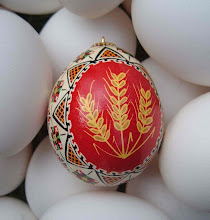I grow onions three ways in the garden:
1) From sets, which are small bulbs grown last year and then put into dormancy for the winter, so they're ready to grow again in the spring. These are only for relatively long keeping onions, since the sets themselves have to keep all winter. I use sets to grow pungent yellow keepers, and medium storage red onions which usually have sets that are already poking their green shoots up when you buy them. It's possible to grow your own sets by sowing seeds thickly in summer, collecting the little bulbs in the fall, storing them properly, and planting in the spring. Too much work unless there's a long-storage variety you crave, and don't want to start them from seed in early spring. Last year a friend gave me lots of onion plants she'd grown from seed, and I didn't get all of them planted. They spent the winter in the garage, and I'll see if any of them grow this year as sets.
2) From purchased plants, usually of sweet onions, grown over the winter in mild climates (like Washington state), pulled in the spring, and shipped to garden centers. Also available by catalog, from Johnny's seeds, for example. The choice of varieties is limited, but this is the best way to grow big, sweet, short-keeping onions. The varieties need to say "long-day" onions. This shouldn't be an issue, but Agway this spring was selling short-day onions - labelled as such - and the chances are they won't bulb at all, as bulbing is triggered by the length of day. We have longer summer days in the north than in the south, so the varieties have to be specific to the geography. Depot Home and Garden will get their plants in early this month.
3) From seeds. Bunching onions are the only seeds it's practical to plant in the garden and expect to get a crop. But it's not hard at all to grow seeds under lights. They need to be started in mid-February to March. The tops can be clipped as they grow. I follow Eliot Coleman's advice and plant 3-4 onions together in one place, so I plant 4-5 seeds in each cell when I start onion plants. For bunching onions I plant 10-12 seeds together in a cell, and also plant them this way in the garden. They are incredibly tiny blades when they emerge, and it's helpful to have a bunch of them together to show up.
I usually grow very good onions considering the nature of our infertile, sandy, soil, and the reason is that I feed them well and water them nearly every day. I have a friend who had been a market gardener and who now lives where he has to carry all his water by hand up a hill to his garden. In one of our driest, hottest summers ever ('95) he only carried water for the onions. This was an impressive lesson for me. Onions have shallow roots and need a plentiful supply of water available if they're growing to grow large. They are also huge feeders.
So this year I'm using some pro-grow organic fertilizer, a little 5-10-10, and some of the compost/silt mixture I just got. I'll work it into the soil well, make furrows, and plant groups of three onion plants - 10-12 inches apart for the large sweet onions, and 6 inches apart for sets and bunching onions. When the onions grow they'll push each other aside and grow as big as they would have if planted individually, and it's much easier to weed them this way. The roots need to be buried, but not much of the plant does. I usually leave sets just barely sticking out of the soil. I dig the furrow deep enough so it will collect and hold water.
Tuesday, May 4, 2010
Subscribe to:
Post Comments (Atom)






When do you plant your onion plants? Johnny sent mine already and I usually don't plant until late April. I am in Windsor COunty.
ReplyDeleteSorry for the tardy reply. Hope you're still checking. I usually plant my onions mid-May. Although they will survive frosts they actually like some warmth.
ReplyDeleteRather than plant in the garden now (although it looks like we're going to have a couple of weeks of warmer weather now) you can "heel in" the plants. That means you can plant them somewhere temporarily, in a group. This keeps the roots from drying out, and wakens them up.
You can heel them in in a compost pile, or in a pot with potting soil, which you can cover easily or bring in if we get temperatures in the teens. Just take the rubber band off, separate them a little, and make sure the roots are covered with soil or compost.
When you put them in their permanent location in a week or two you'll see new white roots starting to grow.
I plant in a community garden, and I find that if I wait a little before planting the onions then other people will have planted some and the fly of the onion maggots will find those onions instead of mine.